Wilson Combat EDC X9 2.0 Review: Compensated Perfection
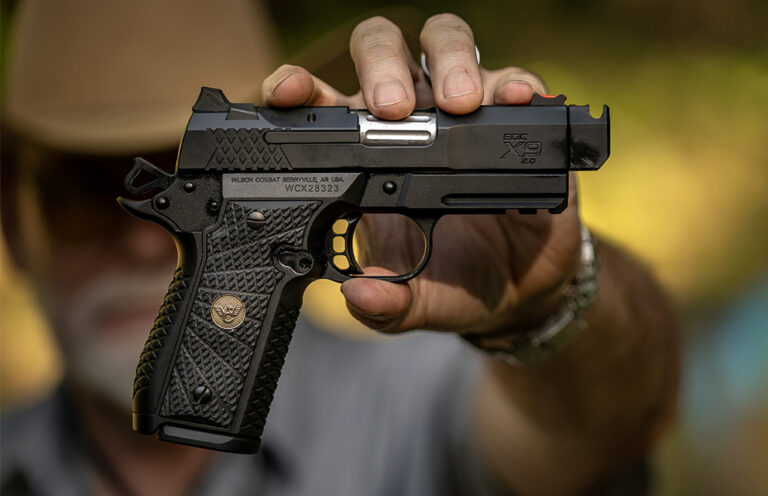
We hit the range to test out Wilson Combat’s compensated EDC X9 2.0.
Not only is the 1911 pistol iconic, but it’s also a timeless design that’s more popular a century after Colt introduced it than it ever has been. But that doesn’t mean the 1911, with its linked barrel, single-action operation and non-pivoting trigger, hasn’t been improved on.
These improvements—at least for 1911-style pistols chambered in 9mm—go way beyond an enhanced grip and thumb safeties. Wilson Combat’s introduction of the EDC X9 pistol marked a significant shift in the 9mm 1911. In 2017, I declared it the best self-defense pistol ever made. I still believe that.
I also believe the new EDC X9 2.0 is an upgraded version of “best.”
Wilson Combat EDC X9 2.0 w/Compensator Specs:
Chambering: 9mm Luger
Barrel Length: 2.35 Inches
Overall Length: 7.4 Inches
Sight Radius: 5 Inches
Height: 5.25 Inches
Width: 1.4 Inches
Weight: 28.6 Ounces (empty)
Finish: Armor Tuff
Sight: Wilson Combat Concealment Battlesight rear, fiber optic front
Capacity: 15 Rounds
Grips: Black G10 w/starburst pattern
Price: $3,564.95 (as tested) ; $3,307 (base price)
Website: wilsoncombat.com
Pros
- An impressively shootable carry pistol
- The compensated model allows for faster, more accurate follow-up shots
- New grip panel options can provide improved ergonomics
Cons
- Very expensive
- Compensator can blow gas back at the shooter in certain positions
- Compensator adds additional length and weight
The EDC X9
Wilson Combat machines the EDC X9’s slide from 416R stainless steel, with a weight reducing, trimmed down, tri-cut-like top. It comes standard with a Wilson Combat Battlesight rear sight and a fiber-optic front sight. The pistol also utilizes the Wilson Combat Enhanced Reliability System (ERS). This is a proprietary system designed to optimize functioning with the varying power levels of 9mm ammunition. The pistol feeds from a double-stacked magazine, but the EDC X9’s real 1911 innovation was the grip frame, which includes a one-piece backstrap that replaces the common 1911 grip safety.
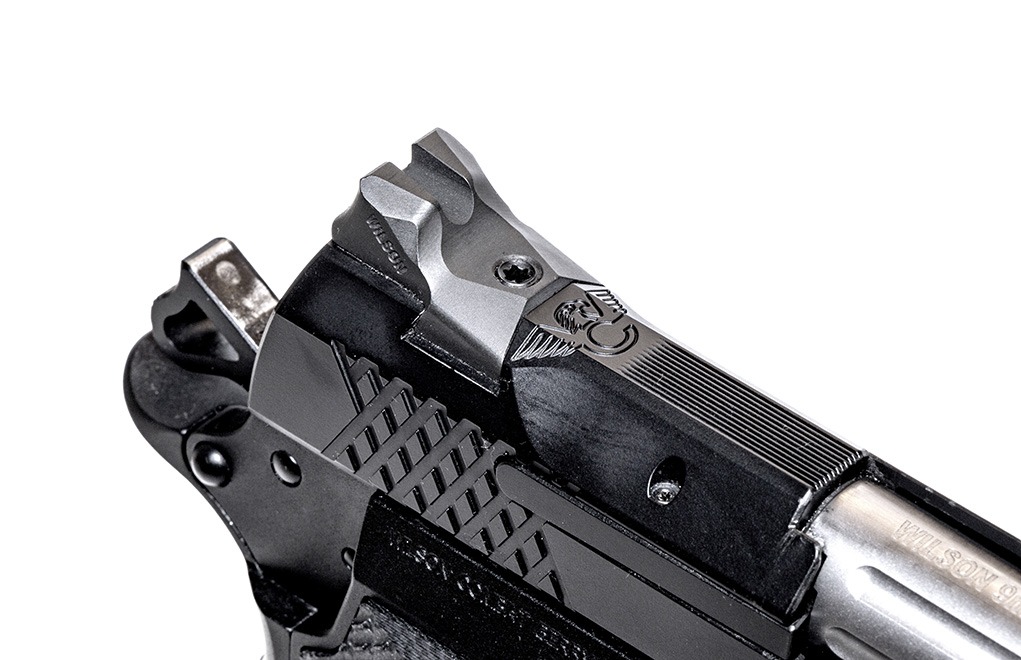
I was so smitten with the EDC X9 when I evaluated it in 2017, I purchased it immediately. Since then, that pistol has spent a lot of time on my side, and I’ve fired thousands of rounds through it. I’ve also recommended the pistol to several others who ended up purchasing one and loving it just as much as I do. When I’ve let people shoot my EDC X9, the most common reaction is an audible, “Wow!”
EDC X9 2.0 Upgrades
You might say the 2.0 upgrades to the EDC X9 are subtle … but substantive. The EDC X9 2.0 features an all-new solid aluminum X-Frame frame design. This change makes the pistol more versatile because now it offers interchangeable grip panels much like with original 1911 pistols. Wilson Combat currently offers six different grip packages for the EDC X9 2.0, and it comes standard with the Wilson Combat Concealment Battlesight rear sight, and a green or red fiber-optic front sight.


Another notable option is for a compensated barrel: You can add it to an existing EDC X9, or even one of the SFX pistols, but the cost is a bit steep at around $1,800—the retrofit requires a new slide. If you’re ordering a new EDC X9 2.0, the upgrade to a compensated barrel is only $257.95, and the option is available on either a 3.25- or 4.0-inch pistol. The comp does add a bit of length and weight to the pistol. With a comp, the 3.25-inch EDC X9 2.0 essentially becomes the same size as the original 4-inch EDC X9 without a comp.
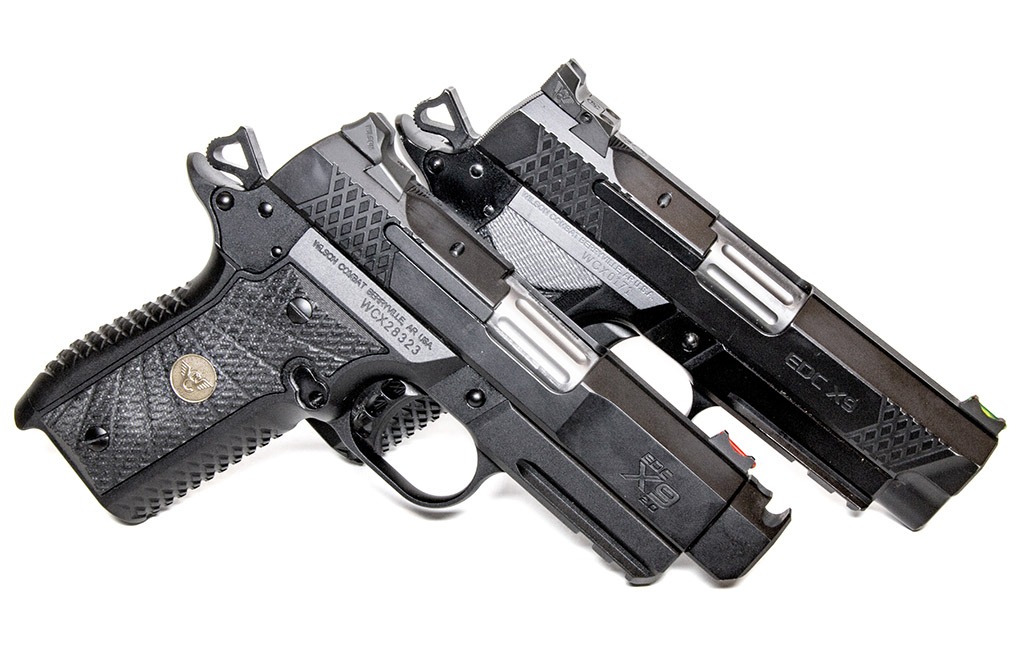

You can purchase a base model EDC X9 at various dealers, and some come with what I call standard options, like an accessory rail, a frame-integrated magwell with 18-round magazines, a compensator and an ambi-safety. However, if you order directly from Wilson Combat, the options are almost endless and include a True Zero optics mount, suppressor height sights, short trigger, flat trigger, Tritium front sight, slide engravings and various color options. Of course, Wilson Combat adjusts the price for these additional goodies accordingly.
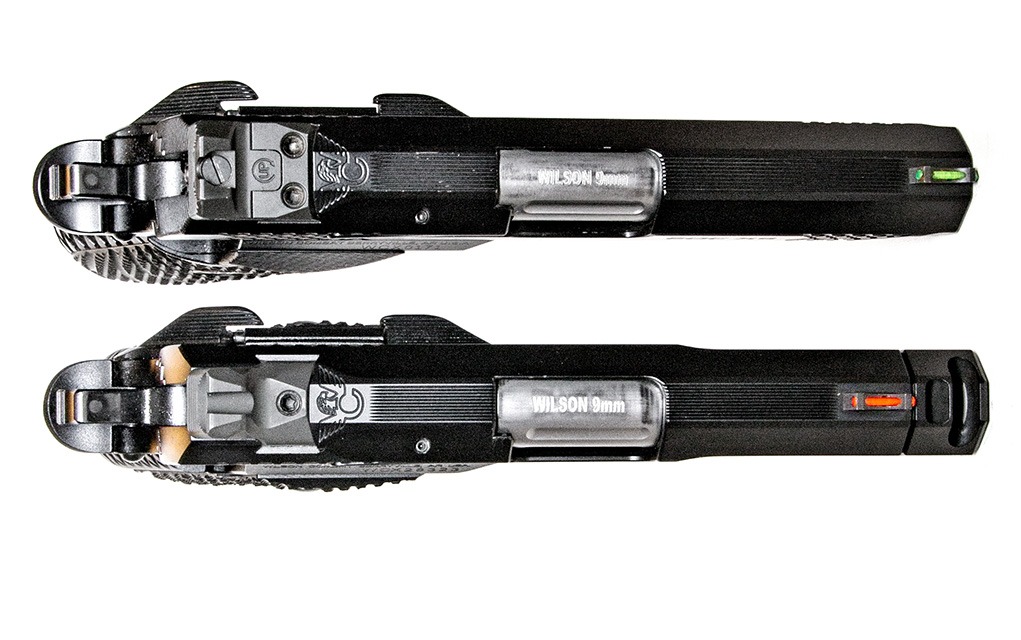

Reliability
If there’s one area where Wilson Combat pistols are generally impeccable, its reliability; they tend to run flawlessly. So, I was a bit surprised that the EDC X9 2.0 comped pistol was initially giving me some problems.
Just to get familiar with the pistol, I began my range time using re-manufactured Wilson Combat 135-grain HBFP ammo at 950 fps. These were light loads, and I was having some cycling issues. Sometimes the slide would capture the empty case in the ejection port—a stove pipe—and sometimes the pistol would fail to feed.
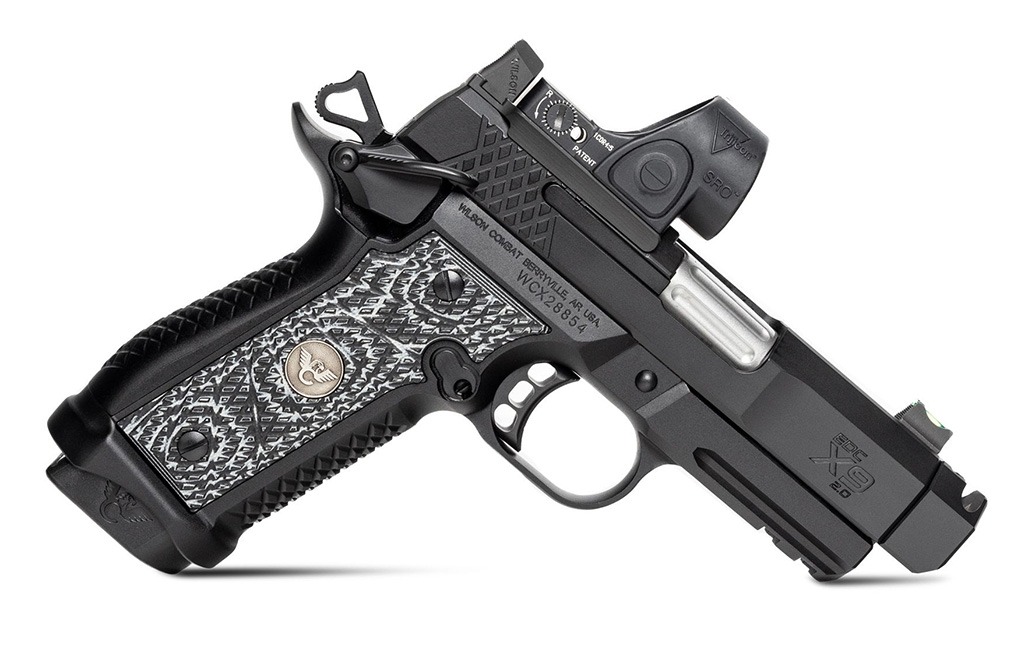

I thought the load might have not had enough gas to drive the compensated slide, but I found it hard to accept the fact that a Wilson Combat pistol was out of the box unreliable. I had a little can of Ballistol in my range bag, and thinking a bit of lubrication might help, I gave the pistol a couple squirts.
Afterward, it ran perfectly with everything I put through it, which amounted to an additional 450 rounds using 10 different loads, which included everything from CCI Blazer to Federal HST. After the juicing, the gun never hiccuped.
Precision
I evaluated six loads for record out of the EDC X9 2.0 pistol, and the exercise was more a measure of my marksmanship than a test of how accurately the pistol shot. If I did my part while shooting five-shot groups from a sandbag rest at 10 yards, you could cover every group with a quarter.
Sometimes I didn’t do my part, and a single stray would open the group a bit. The test target supplied with the pistol was a three-shot group fired at 15 yards that measured 0.58 inch. Most of the first three shots I fired for every group were about that size.
Shooting Results
| LOAD | MV | SD | ENG | PRECISION |
| Lehigh Defense 90-grain XD | 1,293 | 18 | 334 | 0.97 |
| Wilson Combat 115-grain TACXP +P | 1,098 | 11 | 308 | 1.12 |
| CCI 115-grain Blazer FMJ (brass) | 1,125 | 9 | 323 | 1.37 |
| Nosler 115-grain ASP JHP | 1,081 | 9 | 298 | 1.14 |
| Federal 124-grain HST | 1,123 | 5 | 347 | 1.07 |
| Wilson Combat 124-grain XTP HP +P | 1,123 | 16 | 347 | 1.31 |
I’m betting the guy who does the accuracy testing for Wilson Combat can shoot better than I can, but I’ll also bet this pistol can shoot better than you can. It comes with a 1.5-inch accuracy guarantee at 25 yards—unfortunately, your humble correspondent does not. I might better represent the precision this pistol is capable of with the two-shot strings I fired after drawing from the holster at 25 yards. More often than not, at that distance I was getting two hits on an 8-inch steel plate in—on average—about 4 seconds.
The Compensated Advantage
Why a compensator? A comp on a pistol reduces muzzle rise by diverting gases upward at the muzzle. In theory, this allows you to make follow-up shots faster. But how much of an advantage is it really?


Since I already own an original uncompensated EDC X9, I was able to do some side-by-side comparisons to measure this advantage while also testing the new EDC X9 2.0. I ran both pistols through two of my most-used shooting drills, and to prevent getting too familiar with each pistol during the process, I’d run each drill twice with each pistol … and then switch.
On the Forty-Five Drill, which requires you to draw and fire five shots into a 5-inch circle at 5 yards in less than 5 seconds, I failed to get all five hits four times with each pistol. Overall, it looks like I shot the original EDC X9 better—I got more hits with it—but you must look at the times to get the clear picture.
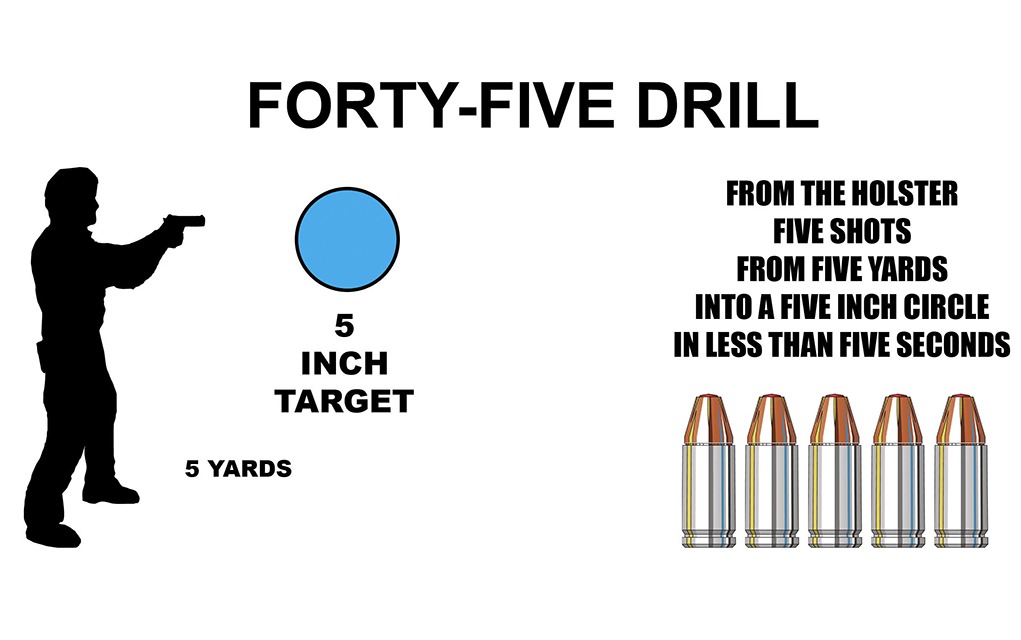

With the original EDC X9, if I didn’t run the drill in less than 3.0 seconds, I was able to get all my hits. With the comped EDC X9 2.0, I had to keep my times slower than 2.6 seconds to get all my hits. If we look a little deeper, and only compare the clean runs, we find that the EDC X9 2.0 (comped) pistol was 4/10ths of a second—almost 13 percent—faster.
Forty-Five Drill Results:
| ATTEMPT | EDC X9 (original) | EDC X9 (original) | EDC X9 2.0 (comped) | EDC X9 2.0 (comped) |
| TIME | HITS | TIME | HITS | |
| 1 | 3.28 | 5 | 2.99 | 5 |
| 2 | 3.03 | 5 | 2.79 | 5 |
| 3 | 3.07 | 5 | 2.58 | 3 |
| 4 | 2.79 | 3 | 2.62 | 5 |
| 5 | 2.92 | 4 | 2.65 | 5 |
| 6 | 2.89 | 4 | 2.40 | 2 |
| 7 | 3.14 | 5 | 2.59 | 4 |
| 8 | 3.15 | 5 | 2.55 | 4 |
| 9 | 2.96 | 4 | 2.63 | 5 |
| 10 | 3.07 | 5 | 2.65 | 5 |
| AVERAGES TOTALS: | 3.03 | 45 of 50 | 2.65 | 43 of 50 |
The Step Back Drill, which you could also call the “hammers,” “double-taps” and “controlled pairs” drill, is more dependent on accuracy than speed. In this drill, you start at 5 yards and draw and hit an 8-inch plate twice. You then “step back” to 10, 15, 20 and 25 yards and repeat the two-shot string at each distance. You also time each segment separately, with the goal of getting 10 hits in less than 20 seconds.
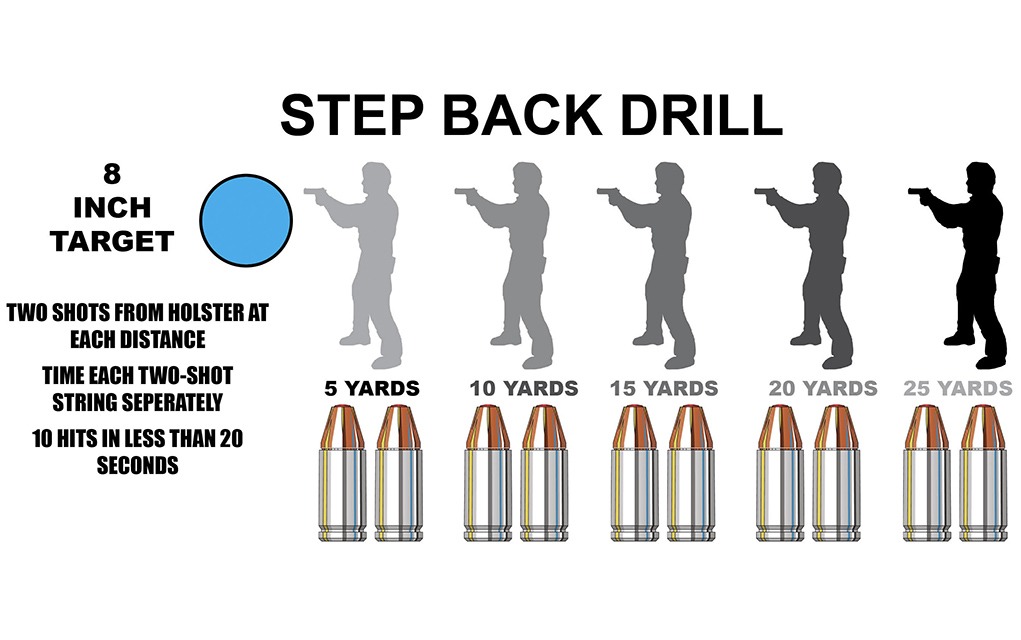

There wasn’t enough difference in the hits and misses to really matter, and though the compensator was less of an advantage, its benefit was still apparent. Average times with the EDC X9 2.0 were three-quarters of a second—about 5 percent—faster. Also, I had six clean runs with the comped pistol and only four with the original EDC X9.
Step Back Drill Results:
| ATTEMPT | EDC X9 (original) | EDC X9 (original) | EDC X9 2.0 (comped) | EDC X9 2.0 (comped) |
| TIME | HITS | TIME | HITS | |
| 1 | 15.22 | 8 | 13.09 | 8 |
| 2 | 15.79 | 10 | 13.99 | 9 |
| 3 | 16.32 | 10 | 14.58 | 9 |
| 4 | 16.70 | 10 | 15.77 | 10 |
| 5 | 16.12 | 8 | 16.30 | 10 |
| 6 | 14.88 | 9 | 16.22 | 10 |
| 7 | 15.18 | 9 | 14.60 | 10 |
| 8 | 15.55 | 10 | 14.77 | 10 |
| 9 | 15.04 | 9 | 14.12 | 8 |
| 10 | 15.15 | 9 | 15.55 | 10 |
| AVERAGES TOTALS: | 15.60 | 92 of 100 | 14.90 | 94 of 100 |
The Verdict
I think it’s safe to say that the 3.25-inch comped EDC X9 will let you shoot just as accurately—and measurably faster—than you can with an original 4.0-inch EDC X9. I also think the grip panel upgrade on the 2.0 EDC X9 makes for a better and slightly more comfortable pistol in-hand.
All that said, I’m still not exactly sure how I feel about a compensator on a carry gun. It does add to the length and that gas blowing up your chest near your face is a bit disconcerting when you’re shooting from the retention position.
However, I’m still convinced the EDC X9—original or 2.0—is the best self-defense handgun currently offered by any manufacturer. No doubt, the damned thing is expensive, and you’ll have to decide if its base price of $3,307, and then the additional cost of the compensator, is worth it. That’s a lot of money to spend for a pistol, but reliable, accurate and easy-to-shoot perfection doesn’t come cheap—never has, never will.
Also, knowing you’ve finally found the gun is very comforting. It means you can finally quit shopping and pontificating … and start concentrating on training.
Editor’s Note: This article originally appeared in the October 2024 issue of Gun Digest the Magazine.
More Handgun Reviews:


Next Step: Get your FREE Printable Target Pack
Enhance your shooting precision with our 62 MOA Targets, perfect for rifles and handguns. Crafted in collaboration with Storm Tactical for accuracy and versatility.
Subscribe to the Gun Digest email newsletter and get your downloadable target pack sent straight to your inbox. Stay updated with the latest firearms info in the industry.
Read the full article here


